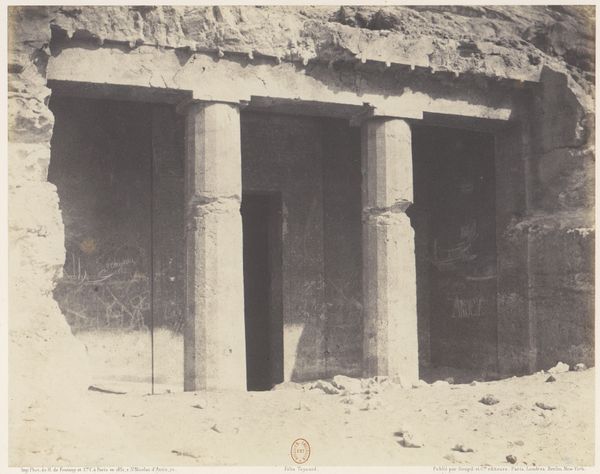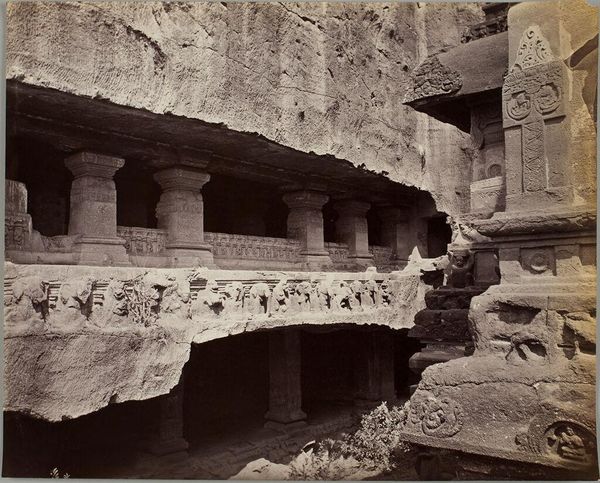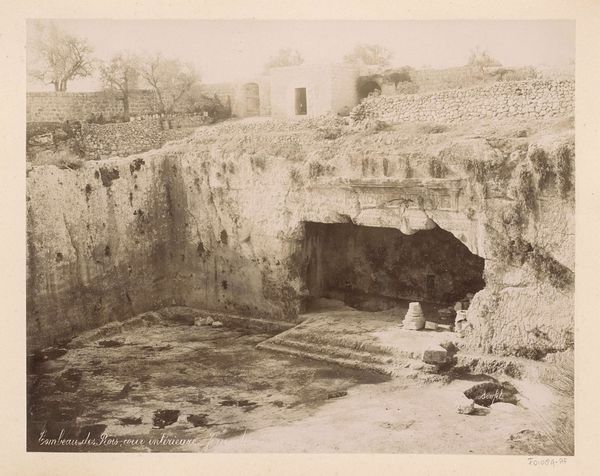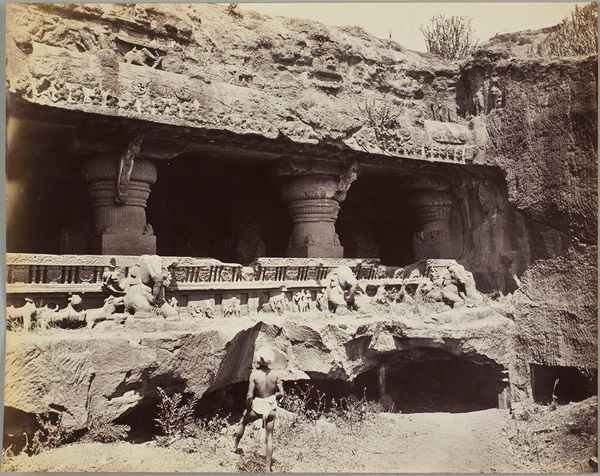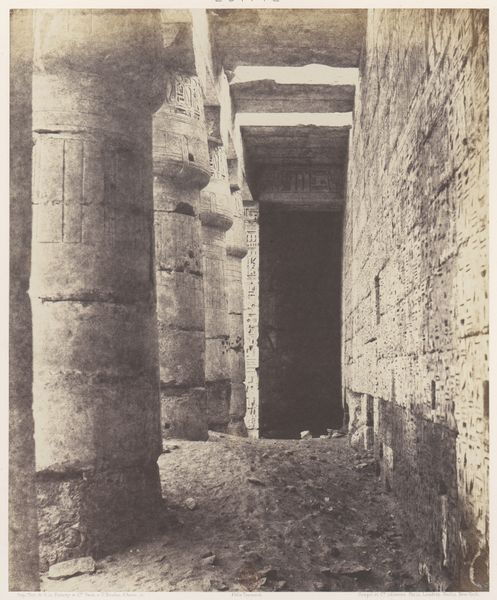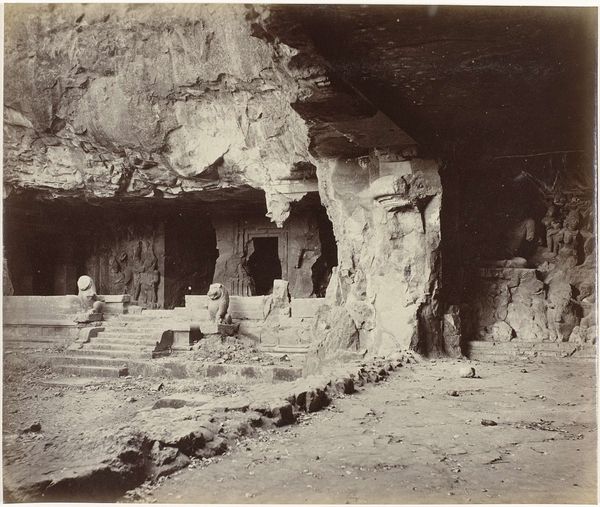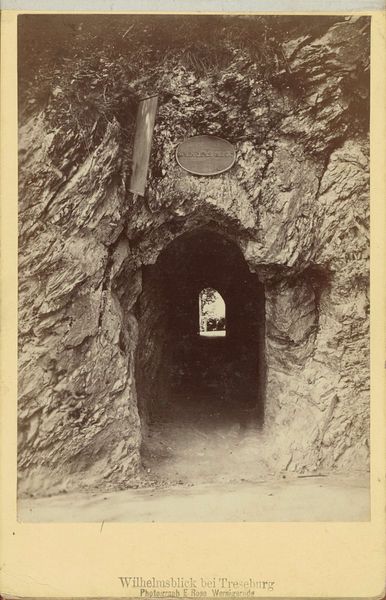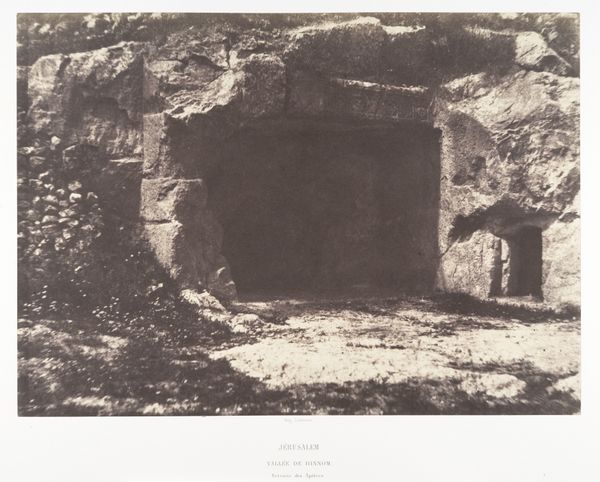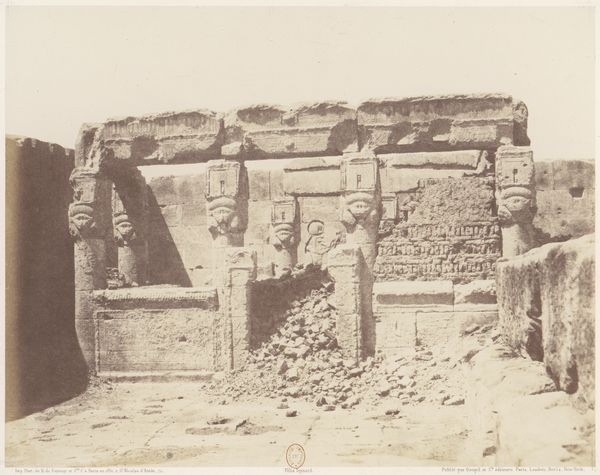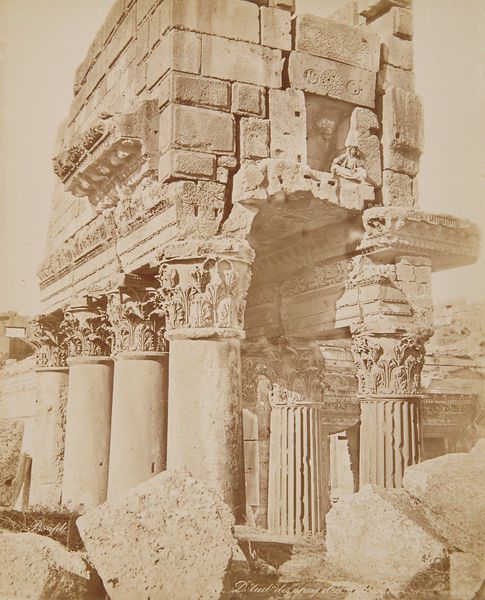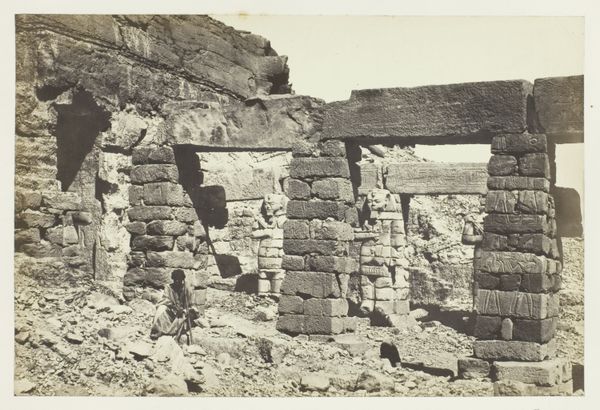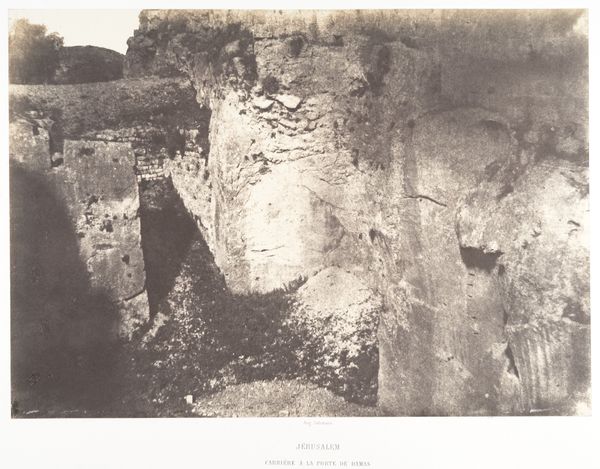
photography, site-specific, albumen-print
#
landscape
#
ancient-egyptian-art
#
photography
#
ancient-mediterranean
#
site-specific
#
albumen-print
Dimensions: height 205 mm, width 263 mm, height 469 mm, width 558 mm
Copyright: Rijks Museum: Open Domain
Curator: Here we have Antonio Beato's albumen print, "Ingang van de tombe van Khnumhotep II te Beni Hassan," taken between 1862 and 1895. Editor: The muted tones give it such an ancient feel, doesn't it? A very stark, geometric composition, almost monolithic. Curator: Indeed. Beato was very interested in documenting architectural sites, and albumen prints were quite popular for their detailed rendering of surfaces. Think about the labor involved: the sourcing of materials, preparing the glass plates, the physical act of carrying equipment into the desert… Editor: Absolutely, and look how he’s captured the texture of the rock, the precise edges of the entrance. It really highlights the formal balance achieved through the arrangement of these pillars. The contrast between light and shadow creates depth. Curator: That entrance gives access to a rock-cut tomb from the Middle Kingdom era. Beyond Beato's technical choices, his presence at Beni Hassan brings a complex colonial history with it. Photographers often played a role in constructing narratives about these places. Editor: Yet, viewing the composition of line and volume is so compelling, though. See the symmetry and rhythm? And, in conjunction, the decay due to erosion, which introduces a wonderful imperfection that underscores the image. Curator: I think understanding Beato’s motivations in relation to those ancient construction methods opens up the photograph beyond a purely formal analysis, and makes it far more insightful about modes of representation and our cultural appetite for history. Editor: Certainly, these types of images provide some critical documentation in terms of conservation history as well. I remain fixated by the geometry that's been composed—that initial artistic intent that now carries added material and societal meaning. Curator: It has been quite beneficial examining the way the image draws both on materials and artistic merit, in considering it more critically in context. Editor: Precisely! I, likewise, am inspired at the prospect of decoding through form—the way it makes palpable a site thousands of years removed from our present reality.
Comments
No comments
Be the first to comment and join the conversation on the ultimate creative platform.
